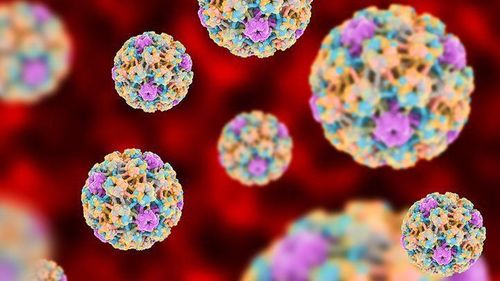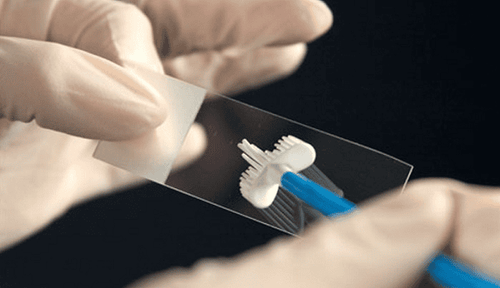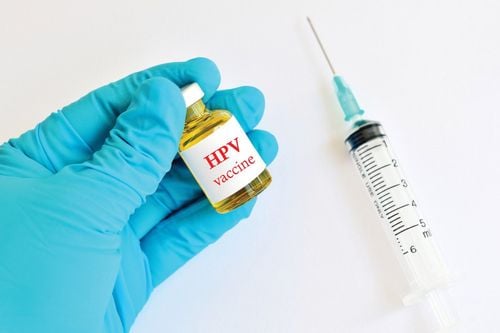This is an automatically translated article.
Human papillomavirus (HPV) is usually passed from person to person by direct skin contact. HPV is the most common sexually transmitted disease in the United States. There are more than 150 different types of HPV. Most of the subjects did not have any symptoms or health-related problems to recognize the virus infection.1. Types of HPV and how it is spread
Most types of HPV virus can cause warts. These warts can grow on the hands or feet. There are more than 40 viruses known as genital HPV. These viruses are spread from person to person by genital contact. This usually happens during vaginal, anal, and oral sex. The genital HPV virus can infect a woman's genital area, both inside and outside of the vagina. They also affect the male genitals, including the penis. In men and women, genital HPV can cause infections of the anus or other parts of the body, such as the head and neck. Some genital HPVs can cause warts or lesions. Genital warts vary in size, shape, and number but rarely progress to cancer. These are called low-risk HPV and include strains of HPV-6 or HPV-11.2. HPV-related cancer

Nhiễm trùng HPV gây ra hầu như tất cả các bệnh ung thư cổ tử cung
Cervical cancer : HPV infection causes almost all cervical cancers. Of cervical cancers associated with HPV, about 70% are caused by 20 types of HPV-16 and HPV-18. Smoking can increase the risk of cervical cancer for women who are infected with the HPV virus. Although almost all cervical cancers are caused by HPV, it is important to remember that most genital HPV infections will not cause cancer. Oral cancer: HPV can cause cancer of the mouth and tongue. It can also cause throat cancer. This is the middle part of the throat, from the tonsils to the top of the voice box. HPV-related cancers are on the rise in both men and women. Changes in sexual behavior, including oral sex, may contribute to increased rates of cancer. Some other types of cancer: HPV has been linked to a number of other less common cancers, such as anal cancer, vulvar and vaginal cancer in women, and penile cancer in men.
3. Treatment of HPV
Currently, there is no method to treat HPV, doctors usually treat warts and precancerous lesions caused by HPV through:Using electric current to remove abnormal tissue Freezing technique Surgery Creams applied directly to the skin for genital warts Removing genital warts does not mean that the person is no longer infected with the virus. Warts can come back because the virus can survive in other cells in the body. A person infected with HPV who does not have warts can still get the virus sexually.
Infection can become active again if the person's immune system is weakened by disease or by drugs that suppress the immune system. Using a condom during sex can reduce the risk of infection.

Đối với mụn cóc sinh dục có thể sử dụng kem bôi trực tiếp lên da
4. HPV vaccine and its use
The HPV vaccine has the potential to reduce the risk of infection. These vaccines cannot cure existing HPV.The goal of vaccination is to prevent HPV infection after exposure to the virus. Gardasil 9 helps prevent infections from HPV-16, HPV -18 and 5 other types of HPV that are linked to cancer. The vaccine also protects people from two low-risk viruses known to cause 90% of genital warts.
Gardasil 9 is used to prevent cancer of the cervix, vagina, and vulva in girls and women 9-26 years of age. It is also used to prevent anal cancer in women and men. There are currently two vaccines that have been discontinued in the United States, the original Cervarix and Gardasil. These vaccines may be used outside of the United States.
5. Vaccine efficacy and safety
Studies show that HPV vaccination is safe and effective in preventing long-term infection. HPV vaccination has been shown to reduce precancerous lesions. Recent research shows that reducing precancerous lesions reduces the risk of progression to cancer.6. Prevention of HPV
HPV testing is one way to prevent cervical cancer in women 30 years of age and older. During the test, your doctor will take a sample of a woman's cervical cells. The HPV test can be done on its own or in combination with a Pap test. This test involves collecting a sample of cervical cells to look for abnormalities in the cells. Usually, one sample can be used for both test methods. There is no HPV test for men.Safe sex is the way to reduce the risk of disease. Having unprotected sex increases the risk of HPV infection. Using a condom does not completely protect you from the virus during sex.

Sử dụng bao cao su không thể bảo vệ bạn tránh khỏi hoàn toàn virus khi quan hệ tình dục
When registering for Gynecological Screening, customers can perform an automated system HPV genotype PCR test to detect diseases caused by HPV virus. In addition, customers can perform other screenings including:
Gynecological examination Transvaginal ultrasound of the uterus and ovaries Transvaginal ultrasound of the breast bilaterally Tests such as: Treponema pallidum rapid test, Chlamydia rapid test, take samples for cervical-vaginal cytology, bacteriological staining (female vaginal fluid), Urinalysis by automatic machine. To register for the Basic Gynecological Examination and Screening Package at Vinmec International General Hospital, you can contact Vinmec Health System nationwide, or register for an online examination HERE
References : Cancer.net
MORE:
Find out what is a test to identify HPV virus What is HPV virus? How many strains are there? Do I need to be tested for HPV before getting the HPV vaccine?













